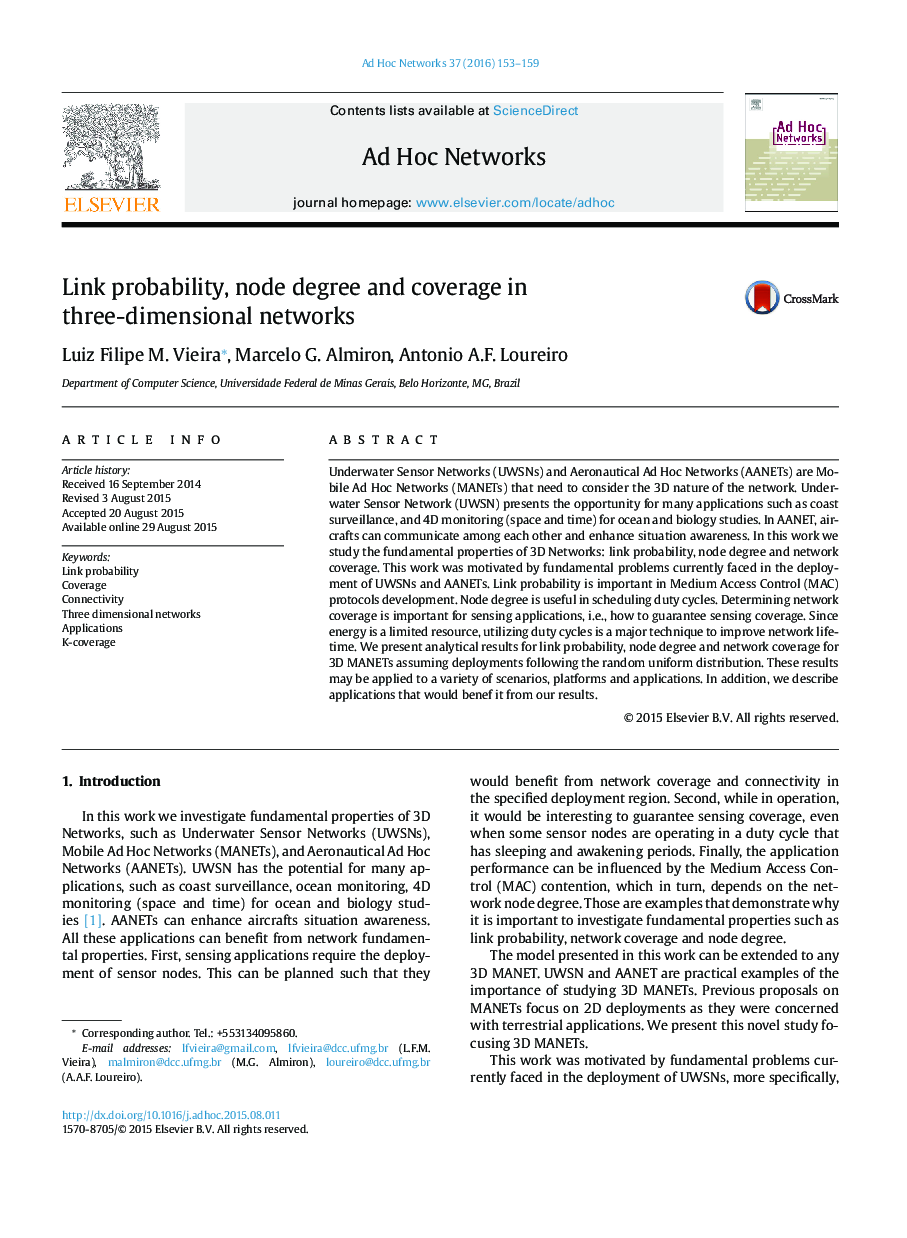| Article ID | Journal | Published Year | Pages | File Type |
|---|---|---|---|---|
| 447877 | Ad Hoc Networks | 2016 | 7 Pages |
Abstract
Underwater Sensor Networks (UWSNs) and Aeronautical Ad Hoc Networks (AANETs) are Mobile Ad Hoc Networks (MANETs) that need to consider the 3D nature of the network. Underwater Sensor Network (UWSN) presents the opportunity for many applications such as coast surveillance, and 4D monitoring (space and time) for ocean and biology studies. In AANET, aircrafts can communicate among each other and enhance situation awareness. In this work we study the fundamental properties of 3D Networks: link probability, node degree and network coverage. This work was motivated by fundamental problems currently faced in the deployment of UWSNs and AANETs. Link probability is important in Medium Access Control (MAC) protocols development. Node degree is useful in scheduling duty cycles. Determining network coverage is important for sensing applications, i.e., how to guarantee sensing coverage. Since energy is a limited resource, utilizing duty cycles is a major technique to improve network lifetime. We present analytical results for link probability, node degree and network coverage for 3D MANETs assuming deployments following the random uniform distribution. These results may be applied to a variety of scenarios, platforms and applications. In addition, we describe applications that would benef
it from our results.
Related Topics
Physical Sciences and Engineering
Computer Science
Computer Networks and Communications
Authors
Luiz Filipe M. Vieira, Marcelo G. Almiron, Antonio A.F. Loureiro,
